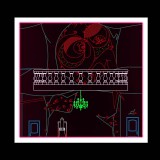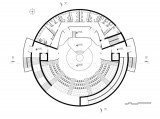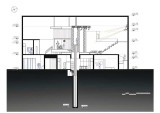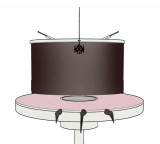Supervisor:
2023
This thesis is the result of an attempt to present a proposal of a theatrical performance of the play “The Balcony” of Jean Genet (1956) from a scenographic and architectural point of view. The specific play consists of nine completely different and barely connected scenes of indoor and outdoor spaces. This challenge for the smooth combination of the individual parts is also the reason why this play was originally chosen. In addition, the very theatrical space in which the performance takes place- a refinery that is transformed into the place where the theatrical scene is established- is in itself an alternative proposal, just as the play itself was in its time a strong challenge for the theatrical conditions. Quite in the centre of the play, a circular floor lifting-lowering mechanism, inspired by the text, necessary for the proposed scenographic performance is a key part of the architectural structure of the theatrical space in which the play is proposed to be performed.
The thesis lists introductory information about the “Theatre of the Absurd”, the special category in which the play belongs, information about the author, the work, the two central ideas of the proposal that is presented. These ideas concern playing with the height differences of the ground on a theatre stage, but also placing a type of building similar to the Panopticon on a theatre stage. Then it is proposed to create a new building as a place to host the performance. Finally, the main topic of the thesis is presented, which is the scenography of the nine scenes of the play. Mainly guided by a kitsch aesthetic, a version of the play is proposed in which special importance and attention has been paid to the objects used in the scenes and their alternation, to the textures and the lighting of each individual scene of the play.







